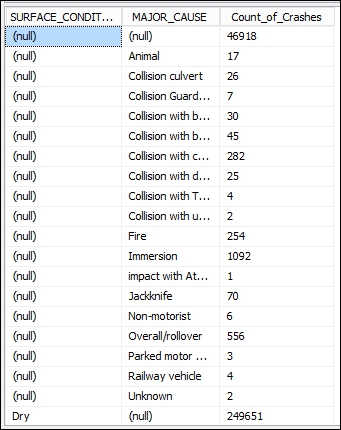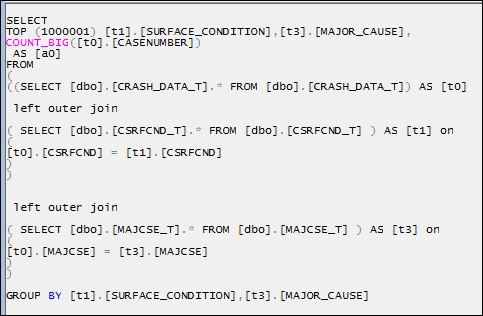Testing DirectQuery mode
By running an SQL Server profiler trace, you can see exactly what is happening when a DirectQuery mode query is executed. In this recipe, you will use SQL Server Management Studio to execute a query and trace the results:
Connect to your model using SQL Server Management Studio.
Drag SURFACE_CONDITION, MAJOR_CAUSE, and Count_of_Crashes to the query window:

How it works...
Since the QueryMode property is set to DirectQuery, the tabular engine is accessing the data from the SQL Server Engine tables. The actual query can be seen when you use SQL Server Profiler to trace the query on the SQL Server Database. In this instance, the query results are sent back to SSAS tabular mode and then presented to the end user tool:

As you can see, the tables being queried are the base tables, and they are being accessed using T-SQL syntax not DAX or MDX.






































































